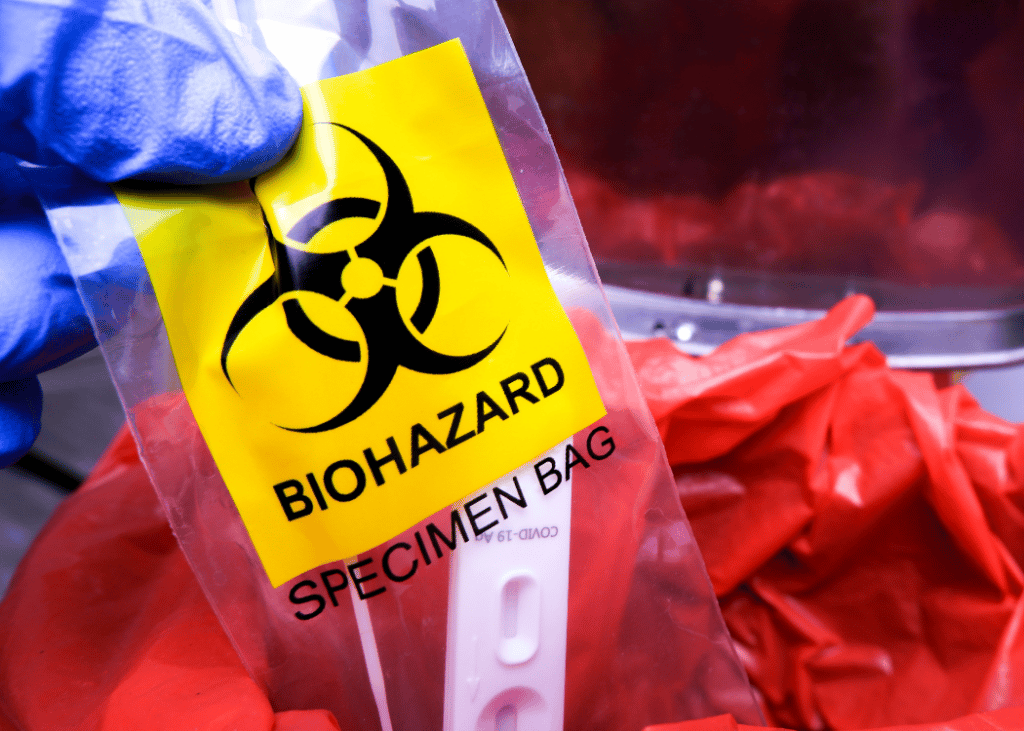Medical Waste Removal Quality: Your Relied On Companion in Safe Biohazard Disposal
Medical Waste Removal Quality: Your Relied On Companion in Safe Biohazard Disposal
Blog Article
Comprehending the Various Kinds Of Waste Disposal Techniques
In the world of waste administration, the array of disposal methods readily available today is vast and varied, each approach offering a distinct function in addressing the obstacle of waste disposal. click here. From recycling approaches that aim to offer brand-new life to materials, to the detailed processes of unsafe waste monitoring, the landscape of waste disposal is intricate yet critical for environmental sustainability. Comprehending the nuances of these different methods not just drops light on the significance of liable waste monitoring but additionally motivates us to reassess our strategy in the direction of garbage disposal in a quickly evolving globe

Recycling Techniques
Recycling methods are important for lasting waste monitoring methods in both industrial and household settings. medical waste removal service. By executing effective recycling strategies, a significant quantity of waste can be drawn away from landfills, preserving natural sources and reducing the ecological impact of manufacturing processes
In suburbs, curbside recycling programs play a vital function in motivating households to different recyclable materials from general waste. Products such as paper, plastics, glass, and metals can be arranged and accumulated for processing right into brand-new items, reducing the demand for resources and energy-intensive manufacturing procedures.
Industrial centers also rely upon reusing methods to decrease waste generation and promote a round economic situation. By implementing closed-loop systems, services can reuse materials within their production processes, reducing costs and ecological footprint. medical waste disposal. Additionally, commercial recycling programs commonly involve partnerships with specialized recycling centers to make sure that products are appropriately sorted, refined, and rehabilitated into the supply chain
Composting Techniques

Aerated static heap composting includes mixing organic waste products in a huge stack and consistently transforming it to guarantee proper aeration. This approach is reliable for massive composting procedures. On the various other hand, vermicomposting makes use of earthworms to damage down natural matter right into nutrient-rich castings. This strategy is well-suited for smaller-scale procedures and households.
In-vessel composting includes positioning natural waste in a closed container with regulated conditions for temperature level and oygenation. Windrow composting includes creating long rows of natural waste and routinely transforming them to advertise decomposition - medical waste removal.
Garbage Dump Disposal
Landfill disposal is a frequently used method for managing waste that can not be reused or composted. Methane gas, a by-product of disintegrating natural waste in landfills, see post is frequently gathered and used as a resource of renewable energy. Efforts to decrease reliance on landfills consist of promoting waste decrease, reusing, and exploring different waste disposal methods to minimize the environmental impact linked with conventional landfill disposal methods.

Waste-to-Energy Incineration
Incineration of waste for power generation is an approach increasingly being thought about as an alternative to typical garbage dump disposal strategies. Waste-to-energy incineration includes the combustion of waste products at high temperatures, typically in specialized facilities developed to generate electrical energy or warmth via the procedure - click here. This strategy not just lowers the quantity of waste that would otherwise be destined for landfills however likewise uses the heat produced throughout incineration to produce energy
Among the key advantages of waste-to-energy incineration is its capacity to create electricity while decreasing the environmental impact contrasted to conventional land fill disposal approaches. By converting waste into energy, this method assists in minimizing greenhouse gas exhausts and dependence on fossil fuels for power generation. Furthermore, waste-to-energy centers are furnished with innovative air contamination control technologies to reduce potential ecological toxins released during the burning procedure.
Contaminated Materials Management
.jpg)
Thinking about the essential relevance of responsible waste monitoring practices, particularly in the realm of ecological sustainability, the emphasis currently shifts towards the detailed domain name of Hazardous Waste Management. Dangerous waste postures significant dangers to both human wellness and the setting, requiring specialized handling and disposal techniques. Usual examples of contaminated materials consist of chemicals, batteries, pesticides, and digital waste.
Contaminated materials Administration entails the identification, collection, transport, therapy, and disposal of materials considered potentially unsafe or harmful. This procedure calls for adherence to rigorous policies and standards to alleviate damaging influence on ecosystems and public wellness. Numerous techniques are employed in managing dangerous waste, consisting of recycling, safe and secure land fills, encapsulation, and chemical treatment.
Proper Contaminated Materials Monitoring is vital for avoiding contamination of soil, water sources, and air pollution. It is essential for markets, laboratories, health care centers, and other generators of contaminated materials to execute robust administration strategies, training programs, and emergency situation feedback plans to make sure the risk-free handling and disposal of these products. Failing to manage hazardous waste appropriately can have significant consequences, emphasizing the value of responsible and diligent practices in this field.
Final Thought
To conclude, waste disposal techniques play an important role in handling and decreasing the influence of waste on the environment. From recycling and composting to land fill disposal and waste-to-energy incineration, each method has its own advantages and restrictions. Appropriate administration of hazardous waste is also necessary to safeguard public health and the setting. It is necessary for sectors and individuals to recognize the different garbage disposal methods readily available and pick one of the most ideal approach for sustainable waste monitoring.
In the realm of waste monitoring, the array of disposal methods offered today is vast and varied, each approach offering a distinctive function in attending to the challenge of waste disposal. click here. From reusing techniques that aim to give new life to materials, to the detailed procedures of dangerous waste management, the landscape of waste disposal is complex yet important for ecological sustainability. Comprehending the subtleties of these different methods not just loses light on the value of accountable waste management however likewise prompts us to reconsider our strategy in the direction of waste disposal in a rapidly advancing world
Efforts to reduce dependence on landfills include promoting waste reduction, recycling, and checking out different waste disposal approaches to minimize the ecological footprint associated with conventional garbage dump disposal practices.
It is important for people and sectors to understand the various waste disposal methods offered and select the most appropriate method for sustainable waste management.
Report this page